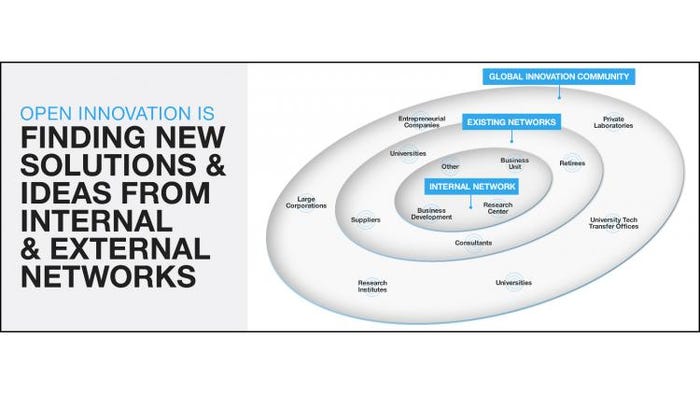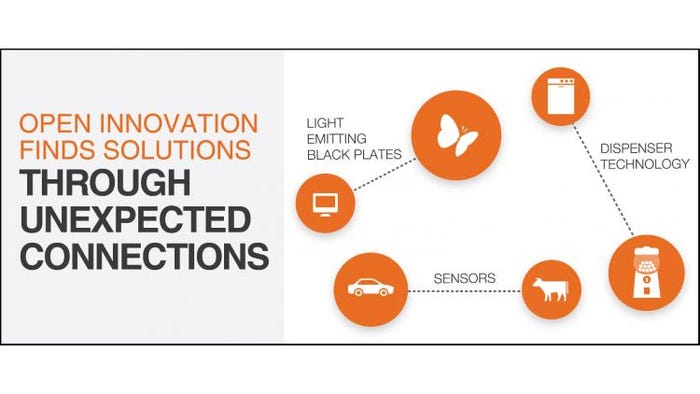Packaging innovation is often an impetus for brand growth—and is quickly becoming an imperative in a highly competitive global marketplace. But it doesn’t happen in a vacuum. More and more, it takes dedicated and creative collaboration from external partners. How do you find them and what are the best practices to ensure success?
Packaging Digest tapped into the expertise of Pamela Semanik to determine recent trends in open innovation. Semanik is a program manager with NineSigma, a leading innovation firm that connects clients with solution providers in its vast and open global network. The matchmaking company tracks existing solutions, which span myriad industries and technical disciplines, including packaging materials and equipment technologies.

Pamela Semanik
How is the open innovation process changing and why?
Semanik: The idea of open innovation (OI) is becoming more mainstream, but the ways in which OI is implemented continue to evolve.
Companies that once resisted seeking technology solutions outside of their four walls often look to OI partners to help figure out the best way to reach targeted technical communities while protecting their IP. Other companies use established means, such as crowdsourcing models, to attract potential partners.
At NineSigma, we help our clients figure out the best way forward for them. For example, we can find technologies for a client that prefers to remain anonymous, and not reveal the exact application for which they need outside help. Or, on the other end of the spectrum, we can work with clients who want to be more “hands-on,” setting up client-branded websites (“Galleries”) that list a variety of internal needs that solution providers can view and respond to online.

Graphic courtesy of NineSigma
How is open innovation playing a role in packaging design, specifically in the area of sustainability and/or social responsibility?
Semanik: We’ve seen the packaging industry move toward new and sustainable materials, innovative design solutions and efficient manufacturing methods. Clients are looking for novel, cost-effective solutions that help them attain a “green” reputation. Recycled materials, minimization of packaging materials, durability and re-thinking (and re-engineering) current packaging offerings are some of the topics clients have brought to us recently.
Can you give us an example of a recent open innovation project that was especially successful? What made it work so well?
Semanik: A beverage company was looking for a method to package a product that had not yet been fully developed. The company sought two separate technology needs concurrently: one for the development of the product, the other for a means to package the final form.
Since the packaging requirements for the final product weren’t completely established, the client couldn’t articulate a full set of criteria. Instead, they listed the desired packaging requirements, along with anticipated challenges to realization. The client received seven proposals, offering a variety of potential methods to package the future product.
By running the two OI projects concurrently, the client was able to evaluate potential product solutions alongside promising packaging options. This client was very open-minded to the possibilities presented, which was a major factor in the success of the overall project.
Why is it so hard to find innovative solutions these days?
Semanik: It’s not. One only needs to know how to articulate a technical problem so as to generate interest, and to encourage (and entertain) solutions that may be wildly different from what was expected. The biggest hurdle in adopting an innovative solution is the ability to think beyond what is currently known.
Graphic courtesy of NineSigma
What requests for packaging solutions are “hot” today and why?
Semanik: The food and beverage industry continues to drive packaging innovations. New methods to preserve products while maintaining clean-label status, in-package food preparation mechanisms, security solutions to reduce product “shrinkage” and improving shelf presence/attracting consumer interest are all active areas of innovation.
Paper-packaging companies seek ways to provide their clients better and cheaper options for materials packaging, cutting down on waste and incorporating sustainable or recyclable materials into their products.
Equipment manufacturers seek new materials and design improvements to enhance output and open up new markets.
What tips do you have for people who are interested in using open innovation for the first time?
Semanik: Do some investigating into current open innovation partners. Look at what other clients are doing, and what tools they’re using to find innovative solutions. Consider the company culture in choosing which projects and approaches work best. Working with an OI partner allows the client to plug into an established model—no wheel reinvention necessary!
If a client wants to design the open innovation process in-house, they probably aren’t ready for open innovation yet. OI partners can coach the client on which projects are most appropriate for venturing outside of the company’s expertise, and set up best practices for the achievement of technical and business goals.
About the Author(s)
You May Also Like




